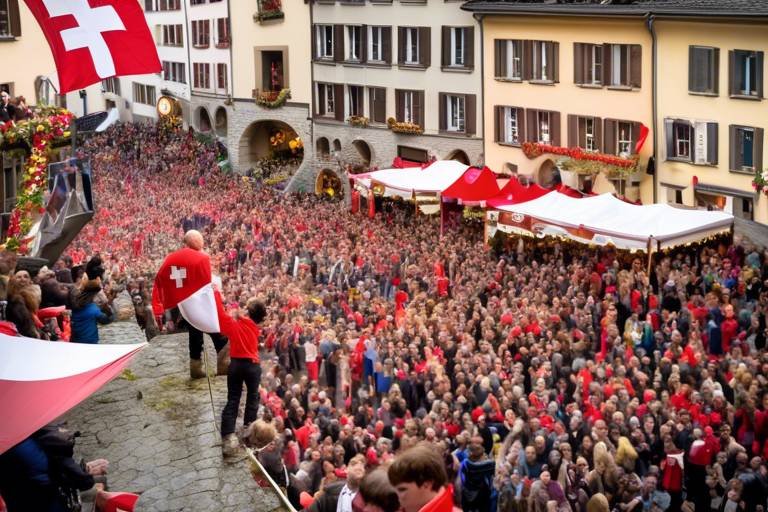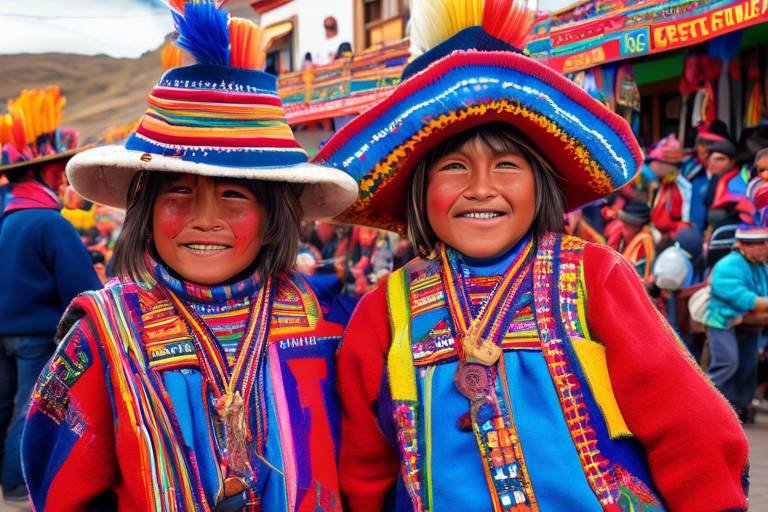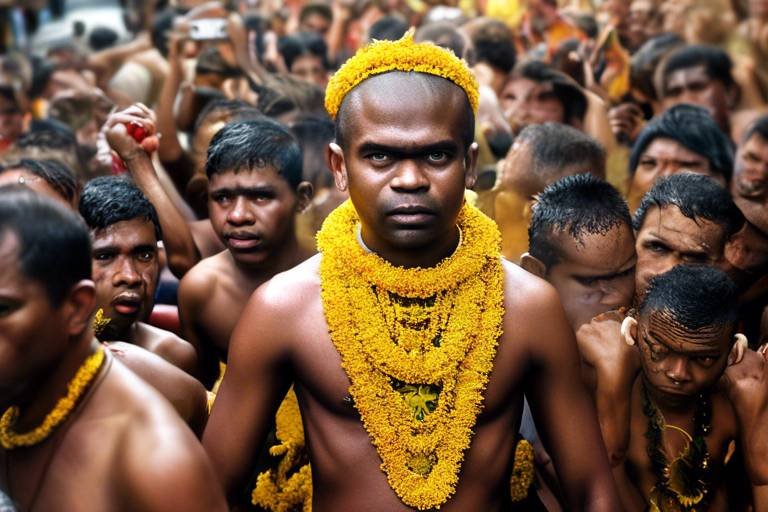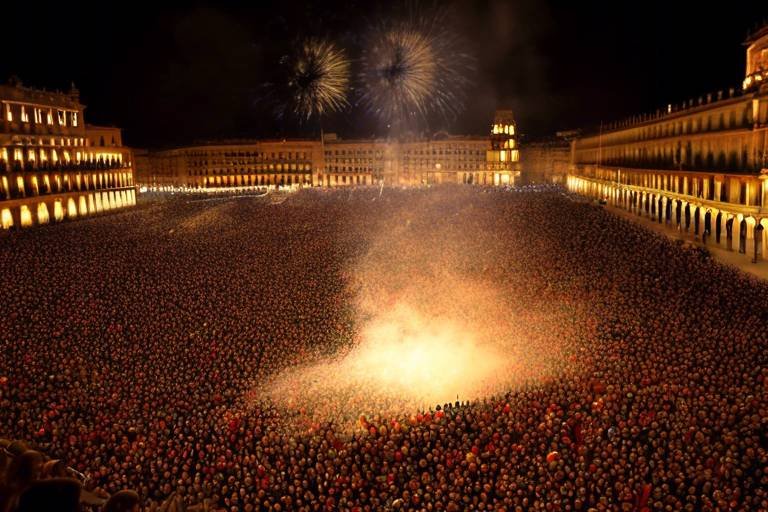The Spiritual Essence of Nepal's Buddha Jayanti
Buddha Jayanti in Nepal is a vibrant and spiritually enriching festival that commemorates the life and teachings of Gautama Buddha, the enlightened sage who founded Buddhism. This auspicious occasion holds deep cultural and religious significance for the people of Nepal, as they come together to honor the birth, enlightenment, and death of Lord Buddha.
Throughout Nepal, the air is filled with a sense of reverence and joy during Buddha Jayanti. The streets are adorned with colorful decorations, and the sound of prayers and chants echo through the temples. It is a time of reflection, celebration, and spiritual renewal for devotees and visitors alike.
During Buddha Jayanti, Nepalese communities engage in a variety of rituals and practices to pay homage to Lord Buddha. From offering prayers at sacred sites to participating in meditation sessions, devotees immerse themselves in acts of devotion and contemplation.
One of the central themes of Buddha Jayanti is the promotion of peace, compassion, and unity. The festival serves as a reminder of the universal values that Buddha preached, emphasizing the importance of kindness, generosity, and harmony among all beings.
As devotees gather to celebrate Buddha Jayanti, they not only honor the teachings of Lord Buddha but also reaffirm their commitment to leading a life guided by wisdom and compassion. The festival serves as a beacon of light, illuminating the path towards spiritual growth and enlightenment.

History and Origins of Buddha Jayanti
Buddha Jayanti, also known as Buddha Purnima, is a significant festival in Nepal that commemorates the birth, enlightenment, and death of Gautama Buddha. The roots of this sacred occasion can be traced back to the life and teachings of Siddhartha Gautama, the revered founder of Buddhism. As the spiritual essence of Nepal's Buddha Jayanti unfolds, it offers a profound opportunity to delve into the historical background and origins of this auspicious celebration.
Originating from the teachings and legacy of Lord Buddha, Buddha Jayanti holds deep symbolic representations and meanings in Nepalese culture. The festival symbolizes the enlightenment and wisdom of Buddha, emphasizing the importance of compassion, peace, and mindfulness in one's spiritual journey. It serves as a reminder of the profound impact of Buddha's teachings on humanity and the enduring relevance of his message in the modern world.
Throughout Nepal, Buddha Jayanti is marked by vibrant celebrations and festive activities that bring communities together in joyous harmony. Colorful processions, prayer ceremonies, and cultural events create a lively atmosphere, reflecting the spirit of unity and reverence for Buddha's teachings. The streets resonate with chants, music, and the aroma of incense, creating an ambiance of spiritual devotion and cultural richness.
Embarking on a pilgrimage to sacred sites associated with Buddha Jayanti is a common practice among devotees seeking spiritual enlightenment and blessings. Lumbini, the birthplace of Buddha, holds special significance during this time, attracting pilgrims from around the world to pay homage to the enlightened one. Other revered locations, such as Swayambhunath and Boudhanath, offer sanctuaries for meditation and reflection, deepening the spiritual experience of the festival.
Community involvement and charitable activities play a vital role in the celebrations of Buddha Jayanti in Nepal. Devotees engage in acts of kindness, generosity, and service, embodying the spirit of compassion and altruism advocated by Buddha. From distributing food to the needy to organizing blood donation drives, the festival inspires individuals to contribute to the welfare of society and uphold the values of empathy and solidarity.
As devotees immerse themselves in meditation and spiritual reflection during Buddha Jayanti, they seek inner peace and enlightenment through introspection and mindfulness. The practice of meditation serves as a pathway to connect with the teachings of Buddha and cultivate a sense of inner harmony and tranquility. It is a time for self-discovery and spiritual growth, aligning with the essence of Buddha's message of compassion and wisdom.
The artistic expressions and cultural performances that adorn the festivities of Buddha Jayanti showcase the rich heritage and creativity of Nepal. Traditional dances, musical recitals, and theatrical performances capture the essence of Buddhist philosophy and values, captivating audiences with their beauty and spiritual depth. Through art and culture, the festival transcends boundaries and fosters a sense of unity and shared humanity among diverse communities.
Reflecting on the global significance of Buddha Jayanti reveals its role in promoting peace, harmony, and unity across cultures and nations. The festival serves as a beacon of hope and interfaith dialogue, fostering understanding and cooperation among people of different beliefs and backgrounds. In a world marked by diversity and division, Buddha Jayanti stands as a reminder of the universal values of compassion, tolerance, and respect that bind humanity together.

Symbolism and Meaning of Buddha Jayanti
The celebration of Buddha Jayanti in Nepal holds deep symbolic significance, reflecting the essence of Buddhism and the teachings of Gautama Buddha. This auspicious festival commemorates the birth, enlightenment, and death of Lord Buddha, symbolizing the cycle of life, death, and rebirth. It serves as a reminder of the impermanence of life and the eternal quest for spiritual enlightenment.
During Buddha Jayanti, Nepalese people adorn their homes and temples with colorful prayer flags and intricate mandalas, symbolizing peace, harmony, and the interconnectedness of all beings. The lighting of lamps and incense represents the illumination of wisdom and the dispelling of ignorance, while the offering of flowers signifies the impermanence of beauty and the transient nature of life.
The lotus flower, a revered symbol in Buddhism, holds special significance during Buddha Jayanti, representing purity, spiritual growth, and the journey towards enlightenment. Just as the lotus emerges from the muddy waters unblemished, Buddhists strive to transcend worldly desires and achieve spiritual purity.
Moreover, the Bodhi tree, under which Lord Buddha attained enlightenment, symbolizes the awakening of consciousness and the realization of inner peace. It serves as a powerful emblem of spiritual growth, resilience, and the potential for transformation inherent in all beings.
Through the symbolism of Buddha Jayanti, Nepalese people are reminded of the timeless teachings of compassion, mindfulness, and non-attachment espoused by Lord Buddha. The festival serves as a beacon of hope and inspiration, guiding individuals on the path towards enlightenment and liberation from suffering.

Celebrations and Festivities
During Buddha Jayanti in Nepal, the air is filled with excitement and reverence as the country comes alive with vibrant celebrations and festive activities. The streets are adorned with colorful decorations, and the sound of chanting and prayers fills the air, creating a joyous atmosphere that is truly infectious.
One of the main highlights of the celebrations is the grand procession that takes place, where devotees parade through the streets carrying sacred relics and images of Buddha. The procession is a sight to behold, with participants dressed in traditional attire and adorned with flowers, adding to the spectacle of the event.
Prayer ceremonies are held in temples and monasteries throughout Nepal, where devotees gather to offer their respects and seek blessings. The sound of bells and drums reverberates through the air, creating a serene and spiritual ambiance that is deeply moving.
Food plays a significant role in the celebrations, with families coming together to prepare special dishes and offerings to share with their loved ones and the community. Traditional sweets and delicacies are prepared, symbolizing unity and sharing in the spirit of the festival.
Artistic performances and cultural events are also a key part of the festivities, with traditional dances, music recitals, and theatrical performances showcasing the rich cultural heritage of Nepal. These performances not only entertain but also serve to educate and inspire, connecting people to their roots and traditions.
The sense of community and togetherness during Buddha Jayanti is palpable, with people from all walks of life coming together to celebrate and honor the teachings of Buddha. The festival is a time of unity and harmony, where differences are set aside, and the focus is on spreading love, compassion, and goodwill.

Pilgrimages and Sacred Sites
Embark on a spiritual journey through the sacred sites and pilgrimage destinations intertwined with the essence of Buddha Jayanti in Nepal. Among these revered locations, Lumbini stands out as the birthplace of Gautama Buddha, drawing pilgrims and visitors from all corners of the world. The tranquil ambiance of Lumbini, with its ancient monasteries and peaceful gardens, offers a profound connection to the spiritual legacy of the Buddha. As devotees traverse through these sacred sites, they immerse themselves in the teachings and enlightenment of Lord Buddha, seeking spiritual solace and enlightenment.

Community Involvement and Charity
Community Involvement and Charity during Buddha Jayanti in Nepal hold a special place in the hearts of devotees. This auspicious occasion is not only about celebrating the life and teachings of Lord Buddha but also about giving back to the community and practicing selfless acts of kindness. During Buddha Jayanti, devotees actively engage in various charitable activities, such as feeding the hungry, providing shelter to the homeless, and offering assistance to those in need.
One of the most common forms of community involvement during Buddha Jayanti is the organization of charity events and donation drives. Devotees come together to collect funds and essential items for the less fortunate, spreading joy and compassion throughout the community. These acts of charity not only benefit those in need but also serve as a way for individuals to cultivate generosity and empathy, embodying the teachings of compassion and altruism taught by Lord Buddha.
Furthermore, community involvement during Buddha Jayanti extends beyond material donations. Devotees actively participate in volunteer work, such as cleaning up public spaces, organizing educational programs, and supporting local initiatives that promote social welfare and harmony. Through these collective efforts, the spirit of unity and cooperation is fostered, creating a sense of belonging and interconnectedness among community members.
Moreover, charity plays a significant role in promoting social equality and justice during Buddha Jayanti. By reaching out to marginalized groups and offering support to those in need, devotees strive to create a more inclusive and compassionate society. These acts of kindness not only benefit individuals on a practical level but also contribute to the overall well-being and harmony of the community as a whole.
In essence, community involvement and charity are integral aspects of Buddha Jayanti celebrations in Nepal, reflecting the core values of compassion, generosity, and selflessness upheld in Buddhist teachings. By actively engaging in acts of kindness and service, devotees embody the spirit of Buddha Jayanti and contribute to the collective welfare and happiness of all beings.

Meditation and Spiritual Reflection
During Buddha Jayanti in Nepal, the practice of meditation and spiritual reflection holds a profound significance for devotees seeking inner peace and enlightenment. As the gentle sounds of prayer bells fill the air, followers of Lord Buddha immerse themselves in moments of deep introspection and mindfulness. The art of meditation allows individuals to quiet the mind, focus on the present moment, and connect with their inner selves.
Through the practice of meditation, participants aim to align themselves with the core teachings of Buddha, which emphasize the importance of self-awareness, compassion, and detachment from worldly desires. By engaging in spiritual reflection, devotees contemplate the impermanence of life, the nature of suffering, and the path to liberation from the cycle of birth and death.
Amidst the bustling festivities of Buddha Jayanti, devotees carve out time for silent contemplation and meditation, seeking to cultivate a sense of inner harmony and tranquility. The serene ambiance of sacred temples and monasteries provides a conducive environment for individuals to delve deep into their spiritual journey and connect with the essence of their being.
As the gentle flicker of butter lamps illuminates the darkness, and the scent of incense wafts through the air, participants engage in moments of profound stillness and introspection. The practice of meditation during Buddha Jayanti serves as a powerful tool for self-discovery, self-transformation, and spiritual growth, allowing individuals to tap into their inner wisdom and cultivate a sense of peace and clarity.

Art and Cultural Performances
Art and cultural performances play a central role in the vibrant celebrations of Buddha Jayanti in Nepal. During this auspicious festival, the streets come alive with a myriad of artistic expressions that showcase the rich cultural heritage of the country. Traditional dances, such as the graceful movements of the Newari dancers or the energetic performances of the Tharu community, mesmerize spectators with their beauty and storytelling.
Music also takes center stage during Buddha Jayanti, with melodious tunes filling the air as musicians play traditional instruments like the tabla, sarangi, and madal. The rhythmic beats and soulful melodies transport listeners to a realm of spiritual bliss, enhancing the overall festive atmosphere.
Furthermore, artistic exhibitions and cultural displays provide a platform for local artisans and craftsmen to showcase their talents. Intricately designed thangka paintings, intricate wood carvings, and handwoven textiles adorn the streets, offering a glimpse into Nepal's artistic prowess and cultural diversity.
One of the highlights of the cultural performances during Buddha Jayanti is the retelling of stories from Buddha's life through theatrical performances and dramatic enactments. These performances not only entertain the audience but also serve as a means of imparting moral lessons and spiritual teachings, keeping the essence of Buddhism alive through the art of storytelling.
Overall, the art and cultural performances during Buddha Jayanti serve as a powerful medium for connecting people with their heritage, fostering a sense of unity and pride in Nepal's rich cultural tapestry.

Global Significance and Unity
Exploring the global significance and unity fostered by Buddha Jayanti reveals a profound interconnection among diverse cultures and communities worldwide. This auspicious festival transcends boundaries, promoting peace, harmony, and understanding on a global scale. It serves as a beacon of hope, inspiring individuals from all walks of life to come together in celebration of shared values and teachings.
Through the lens of Buddha Jayanti, we witness the power of unity in diversity, as people from different backgrounds unite in reverence for the timeless wisdom of Lord Buddha. This festival serves as a reminder of our shared humanity, emphasizing the importance of compassion, tolerance, and mutual respect in a world often marked by division and discord.
Moreover, Buddha Jayanti acts as a catalyst for interfaith dialogue and cooperation, encouraging individuals to engage in meaningful conversations about spirituality, ethics, and the pursuit of inner peace. It transcends religious boundaries, inviting people of all faiths to come together in a spirit of harmony and mutual understanding.
As we reflect on the global significance of Buddha Jayanti, we are reminded of the universal values that bind us together as a human family. This festival serves as a powerful reminder of our interconnectedness and shared destiny, inspiring us to work towards a more peaceful and harmonious world for present and future generations.
Frequently Asked Questions
- What is the significance of Buddha Jayanti in Nepal?
Buddha Jayanti in Nepal holds great spiritual significance as it commemorates the birth, enlightenment, and death of Gautama Buddha. It is a time for devotees to honor his teachings and legacy through various rituals and cultural traditions.
- How is Buddha Jayanti celebrated in Nepal?
Buddha Jayanti in Nepal is celebrated with vibrant processions, prayer ceremonies, and cultural events that create a festive atmosphere throughout the country. Devotees engage in acts of kindness, meditation, and reflection to mark this auspicious occasion.
- What is the global significance of Buddha Jayanti?
Buddha Jayanti holds global significance in promoting peace, harmony, and unity across diverse cultures and communities worldwide. It serves as a platform for interfaith dialogue and understanding, fostering a sense of unity beyond borders.



















